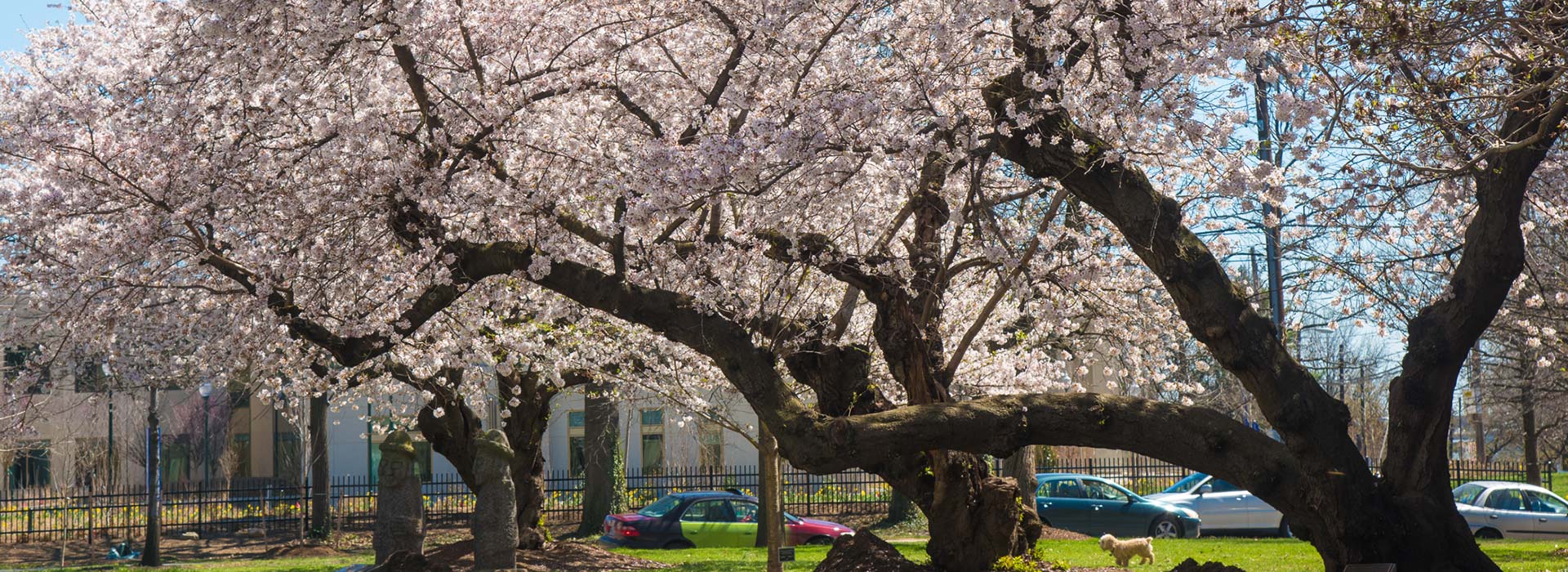Contact Us
Arboretum

Hardy hibiscus
(Hibiscus moscheutos)

Ginkgo
(Ginkgo biloba)

American sycamore
(Platanus occidentalis)

Japanese anemone
(Anemone hupehensis var. japonica)

River birch
(Betula nigra)

L: Fan flowers (Scaevola aemula),
R: Hybrid verbena (Verbena × hybrida)

Shrubby pavia
(Aesculus parviflora);
Eastern tiger swallowtail butterfly
(Papilio glaucus)
Connect With Us
Work Study, Internships, and Volunteering
We often have opportunities for work study, internships, and volunteering in the Arboretum, including hands on grounds support or assisting with promotional, design, and technological projects. If interested contact:
Mike Mastrota
Arboretum Manager
mastrot@american.edu
Arboretum Awards and Prizes
Professional Grounds Management Society (PGMS) Grand Award winner 2022 in the Urban Campus category (highest level)
Member of Tree Campus USA program sponsored by the Arbor day Foundation (14 consecutive years)
Level II accredited Arboretum with Arbnet

Arboretum Walking Tour
Contact Mike Mastrota to schedule a walking tour of the arboretum
American University Arboretum (video)
Hear Michael Mastrota, AU's arboretum manager, discuss our award-winning arboretum
Interesting Tree Species on Campus
Interesting Trees on Campus
Shrubs, Perrennials, and Grasses
The campus is filled with many shrubs, perennials, and ornamental grasses of all shapes and sizes. Here is a sampling of some of our favorites that have performed well on our campus.
Shrubs
- Edgeworthia chrysantha (Paperbush)
- Fothergilla gardenii (Dwarf Fothergilla)
- Hydrangea paniculata ' Limelight ' (Panicle Hydrangea)
- Hydrangea quesrcifolia ' Alice' (Oakleaf Hydrangea)
- Ilex glabra (Inkberry)
- Itea virginica (Virginia Sweetspire)
- Syringa pubescens ' Miss Kim' (Manchurian Lilac)
- Viburnum carlesi (Fragrant Viburnum)

- Beauty berry (Callicarpa dichotoma )

- Summersweet (Clethra alnifolia)

- Narrowleaf cattail (Typha angustifolia)
Perennials & Ornamental Grasses
- Calamagrostis acutiflora 'Karl Foerster' Feather Reed Grass
- Nepeta faassenii 'Walker's Low' Catmint
- Perovskia atriplicifolia 'Russian Sage'
- Hibiscus moscheutos 'Lord Baltimore' Hardy Hibiscus
- Echinacea purpurea 'Magnus' Purple Coneflower
- Hakonechola macra Japanese Forest Grass
- Senecio aureus Golden Ragwort
- Acanthus mollis Bear's Breeches
- Hemerocallis 'Cherry Cheeks' Daylily









